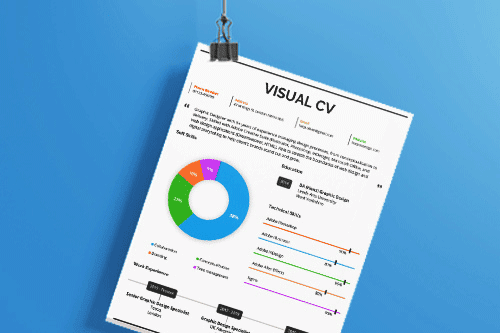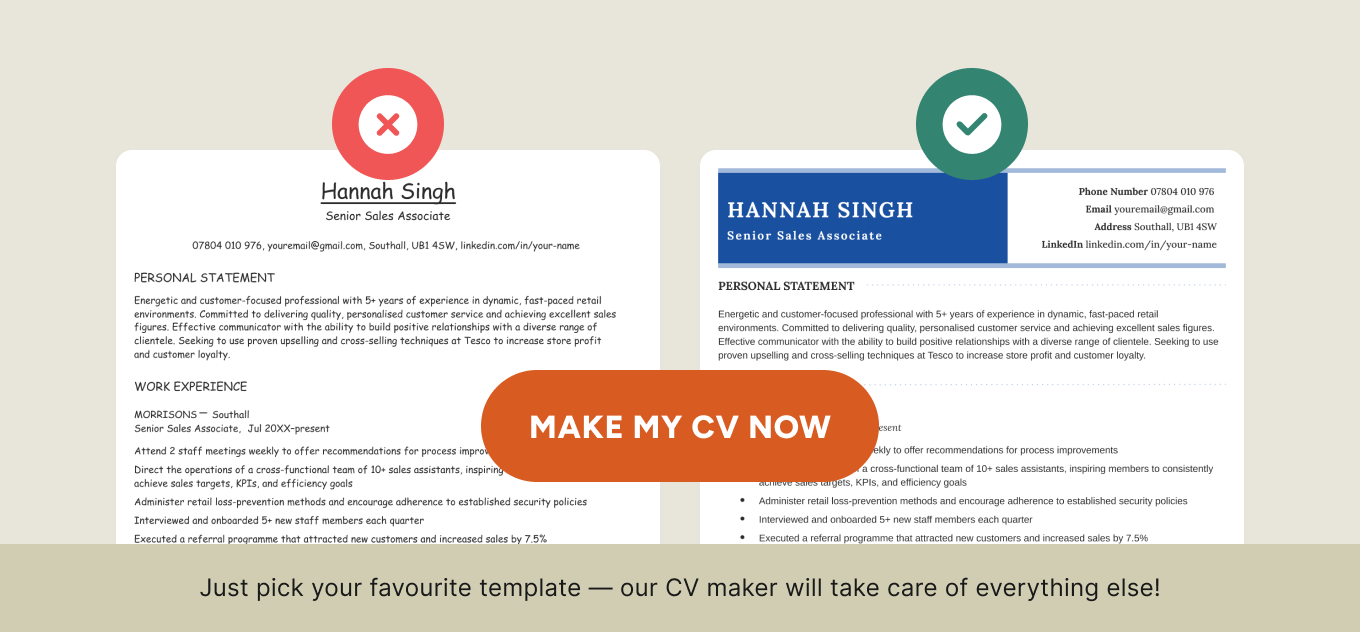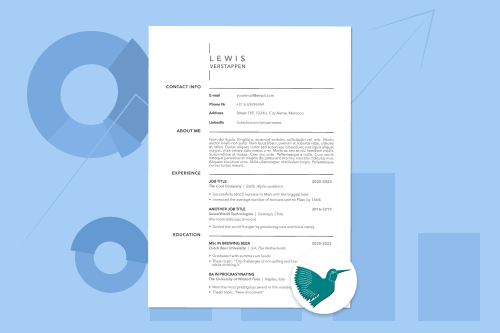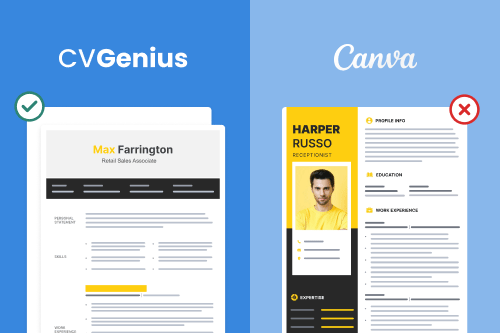A visual CV is a document or video with features like icons, colourful backgrounds, and graphics designed to emphasise your job-specific skills and experience. Scroll down to see visual CV examples and templates, including a:
1. The traditional visual CV
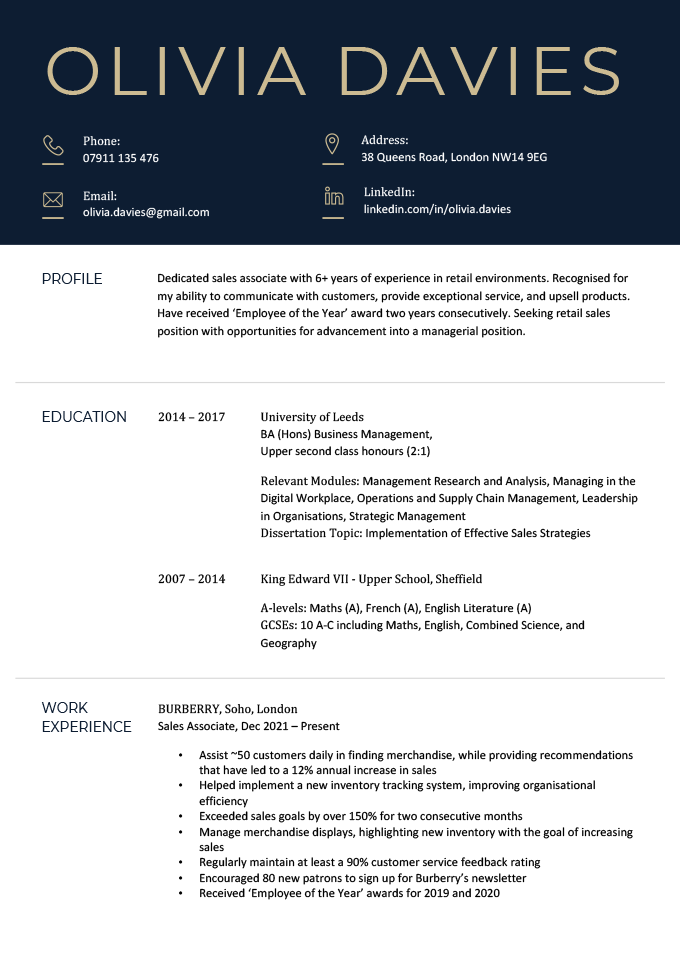
Download Traditional Visual CV Template (MS Word)
All good CVs have visual elements designed to catch the employer’s eye. Such CV visuals include:
- coloured text and backgrounds
- lines and other highlights used to separate CV sections
- CV icons for contact information and section headers
The CV example above uses icons and a coloured CV header to make the applicant’s name and contact information jump off the page.
If you want to showcase your technical design skills on a traditional visual CV, consider formatting your CV using a LaTex CV template — but remember that this is trickier than using a word processor or CV maker.
2. The infographic CV
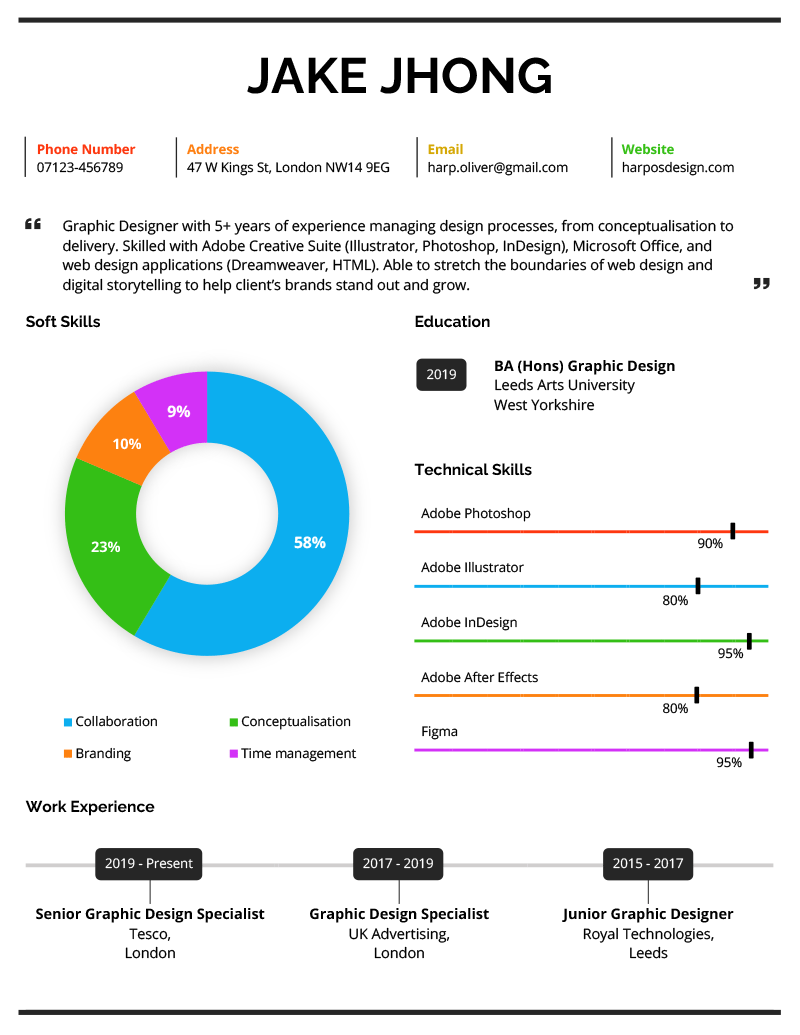
Download Infographic CV Template (MS Word)
An infographic CV includes graphs, charts, and sometimes even a work experience timeline. Submitting an infographic CV is a bold move, so you should only make one if you:
- can clearly present your job-specific skills and experience in infographic format
- also submit a traditional CV and write a cover letter to ensure the employer gets a full view of your abilities
- save your infographic CV as a PDF so it’s easy to open and view
Here are three websites you can use to create your infographic CV:
Although the standard CV length is two pages, you can condense yours into a one-page infographic CV to avoid overwhelming recruiters with a CV layout they’re not used to seeing.
3. The timeline CV
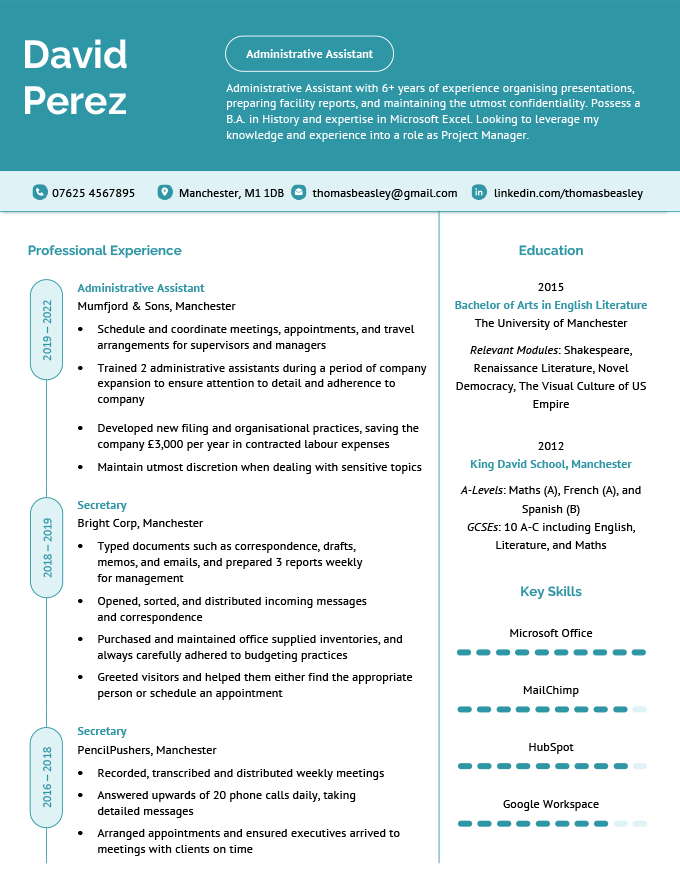
Download Timeline CV Template (MS Word)
One popular CV visual element is a timeline that clearly illustrates your career progression. Our UK CV template above uses a vertical timeline to make your work experience stand out to recruiters, many whom are tired of clicking through CVs with more traditional formatting.
4. The skills bubbles CV
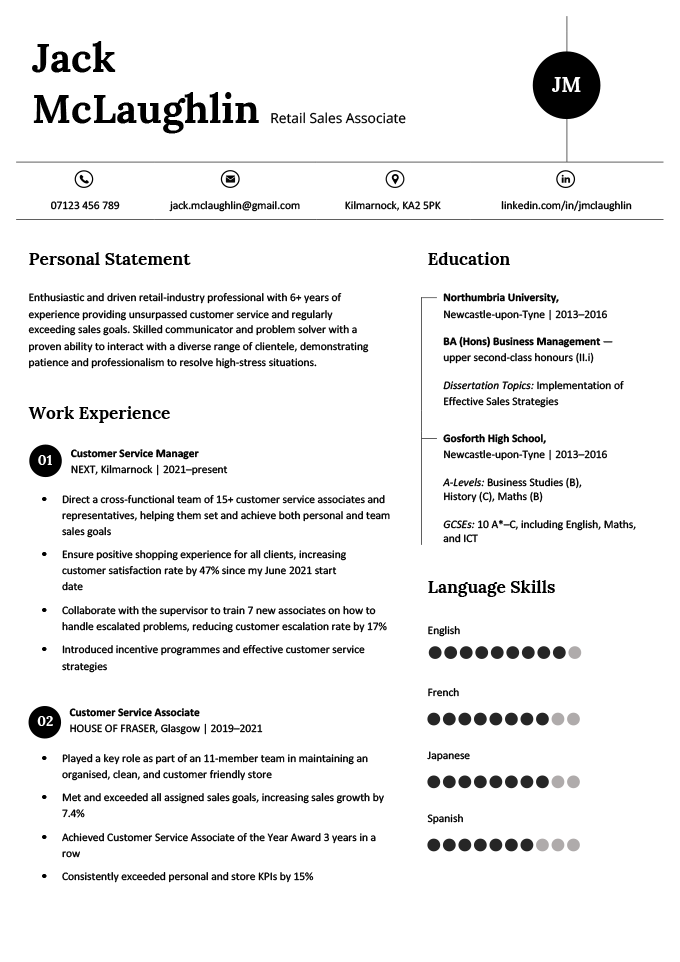
Download Skills Bubble CV Template (MS Word)
Using skills bubbles or bars to illustrate ability is popular in modern CV designs. An advantage of this approach is your skills section is easier to skim, and you don’t have to use boring words like ‘advanced’ or ‘intermediate’ to describe your skill level.
However, use skills bubbles cautiously when you’re deciding what to include in your CV. If you’re at all concerned that your target employer won’t understand how your abilities can help them succeed, use words to explain rather than graphics.
5.The photo CV
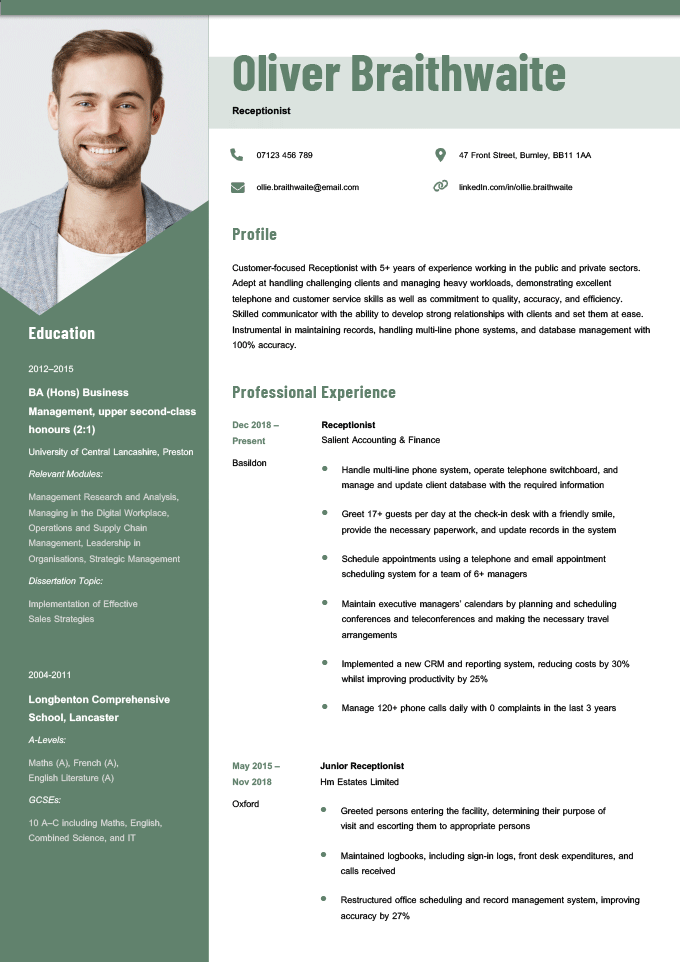
Download Photo CV Template (MS Word)
If the role you’re applying for is closely tied to your appearance (e.g., acting, modelling, or in-person customer service), consider using a photo CV. This type of visual CV includes your professional headshot in the header.
Even if you’re applying for a receptionist job like the applicant above, using a photo on your CV is optional. It’s usually best to avoid letting employers judge your appearance during the application process.
6. The 3D CV
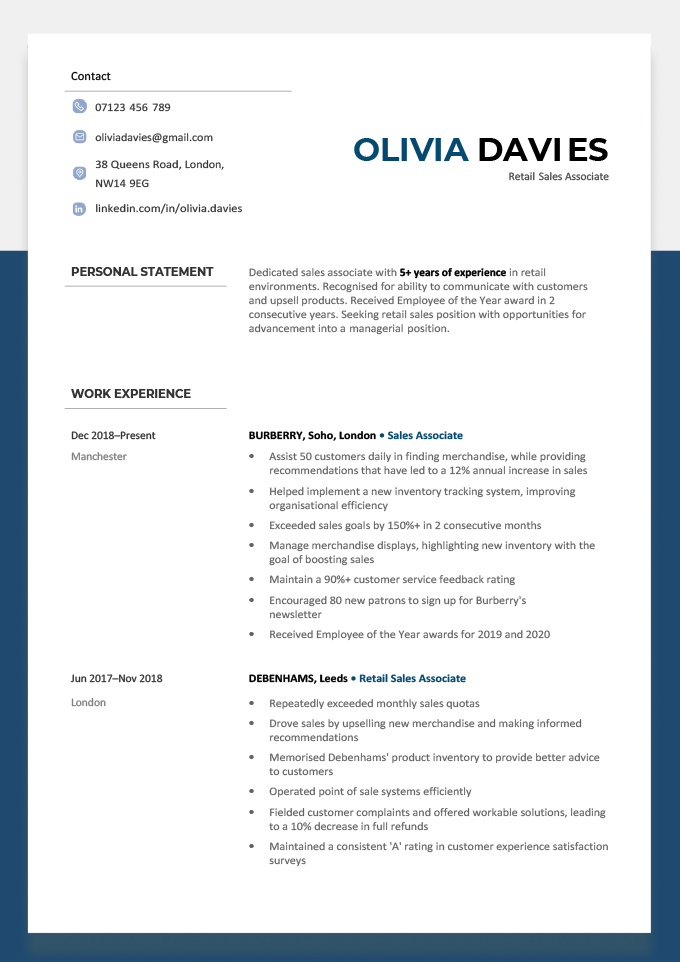
Download 3D CV Template (MS Word)
The visual CV above uses subtle dropshadow to ensure its content grabs the readers’ attention at first glance. But it’s up to you to learn how to write a CV that keeps them reading once they move on to the content.
7. The video CV
This video CV works because the applicant doesn’t just read their CV. Instead, they briefly describe their most relevant skills, including specific examples of how they’ve used those skills.
No matter how great your video is, always include your traditional CV with it to make your application easily accessible to all recruiters.
You can add graphics or B-roll to your video CV, but only do so if you can make it look professional. You don’t have to create a BAFTA-worthy short film, but you shouldn’t submit a low-quality video that makes recruiters laugh at you rather than seriously consider your application.
Here are tools you can use to make a video CV that impresses your target employer:
When to use a visual CV
Before you write your CV, consider the type of job and company you’re targeting to decide whether or not you should submit a visual CV. You can also check job-specific CV examples for a better idea of whether visual CVs are appropriate for your industry.
The kind of companies you’re targeting determines the value of a visual CV as an accessory to your job application. Generally, if you’re applying for a job in a:
If you’re unsure what type of industry your target role falls into, don’t panic. Just study the job advert, research the company’s website and social media, and use your best judgement. It’s always okay to err on the side of caution by using a basic CV template.
And if you decide a visual CV is best for your application, choose a CV template with appropriate visuals.
For example, if you’re making a graphic design CV, use a creative CV template with bold visual features to showcase your artistic talent. But if you’re aiming for a bookkeeping job, use a professional CV template with more reserved graphic elements that don’t distract from descriptions of your accounting skills.
How to make a visual CV
Unless you’re a graphic designer with the skills needed to make a professional CV from scratch, you have two options for making a visual CV:
More visual CV FAQs
Below are answers to 3 more common questions about what a CV should look like:
1. How do you make a visual resume?
If you’re applying for a job abroad, you may need to submit a resume instead of a CV. The main difference between a CV and a resume is length. CVs should be at least two pages long because they cover more of your entire background, while resumes are usually just one page and focus on relevant experiences and skills.
To make a visual resume, you can either:
- find a resume template with visual elements that fit your needs online and fill in your information
- use a resume builder that offers visual CV templates
- condense your visual CV into one page and translate it into the version of English used in the country you’re applying to work in (e.g., American English for the US)
You can also study good resume samples from your industry to get a clear idea of how to write yours.
2. How do you make a blind CV?
A blind CV is one that doesn’t reveal your personal information. To make a blind application, don’t put the following personal details on your CV:
- name (you can use your job title instead)
- postal address
- email address (unless it doesn’t include your name)
- dates worked for your employers
- graduation dates
- other information that could reveal information about you (such as the names of the schools you went to or the locations of your employers)
3. What is the difference between a visual CV and an infographic CV?
The difference between a visual CV and an infographic CV is straightforward:
‘Visual CV’ is a broad term that includes any CV with visual elements, whereas an infographic CV is a specific kind of visual CV.
